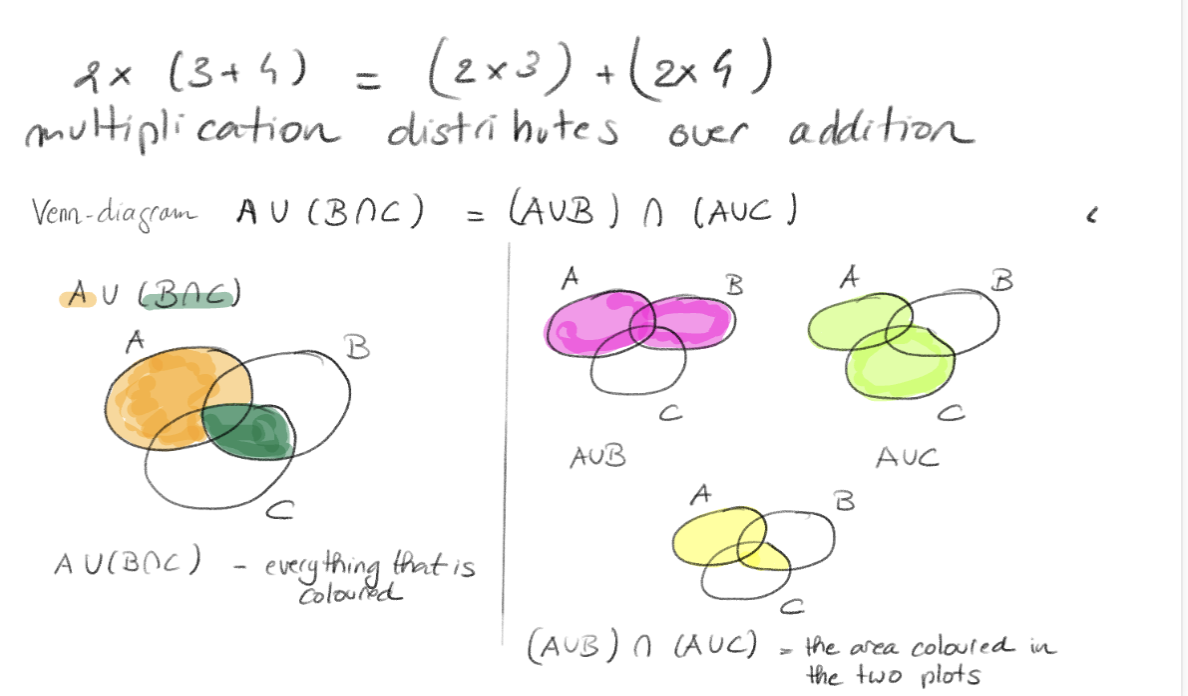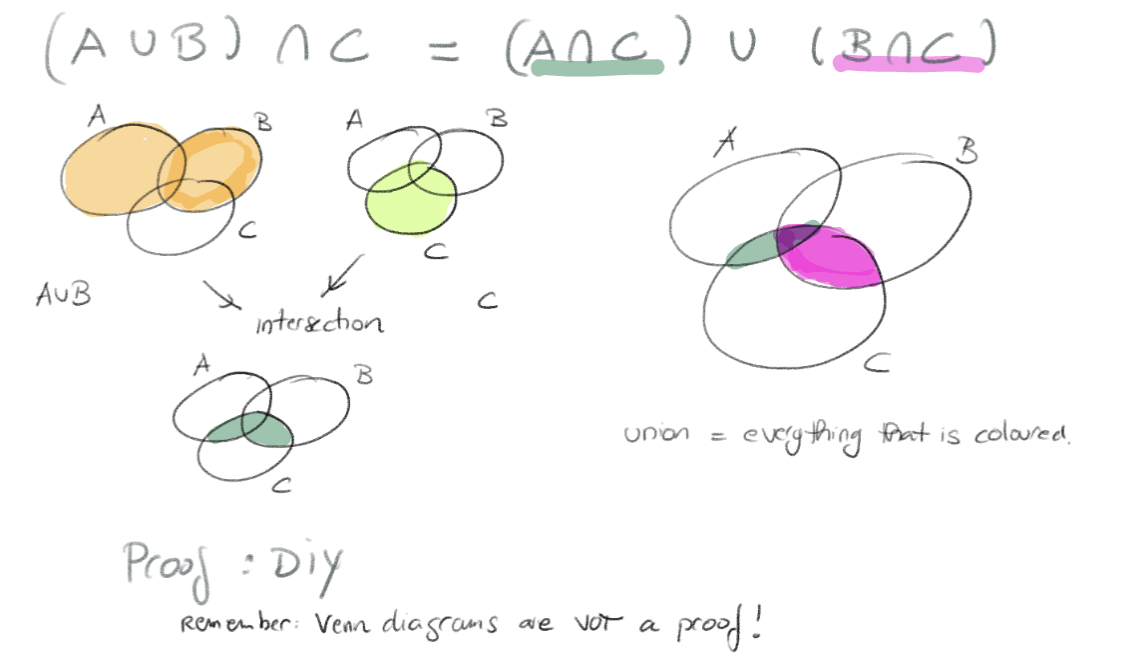Lecture notes
- Intro notation
- Describing sets
- Subsets
- Set equality
- Union, intersection, difference of sets
- Complement of a set
- Proofs with sets
- Associativity
- Distributive laws
- De Morgan laws
Intro notation
- Set → Collection of specified, unordered and not duplicate objets. Can be infinite or finite or empty: or (empty set can also be represented with )
- Cardinality of a set → Number of elements in the set:
Describing sets
- →
Subsets
Subset
The set B is a subset of the set A every element of B is also an element of A:
B is a subset of A. B is not an element of A.
The following statements are always true:
Set equality
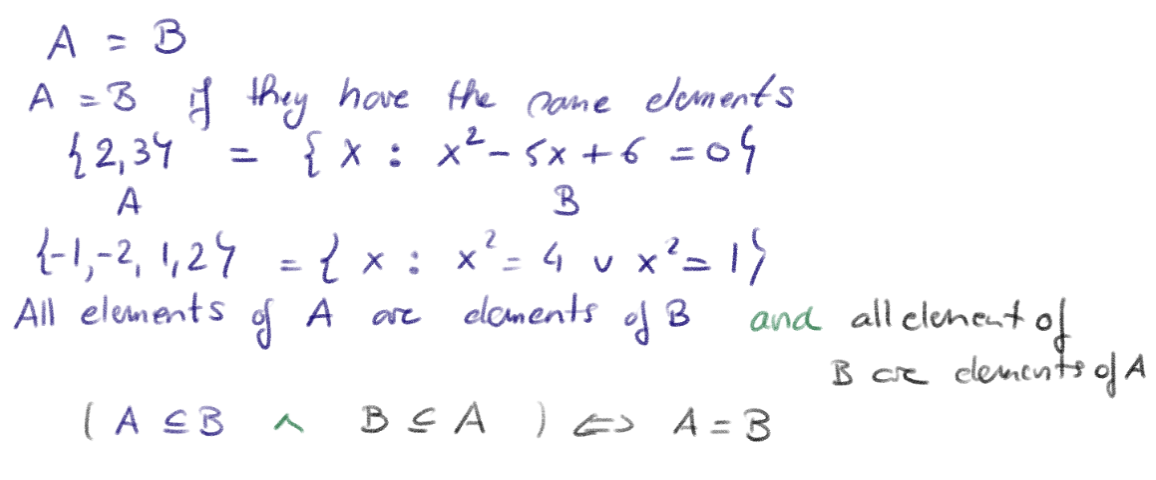
Union, intersection, difference of sets
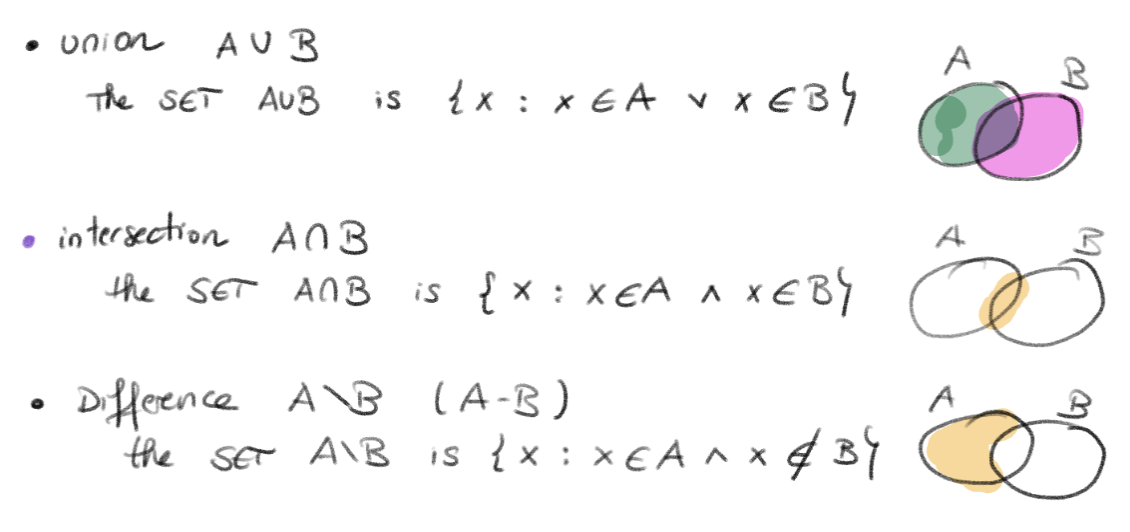
Complement of a set

Proofs with sets
Example
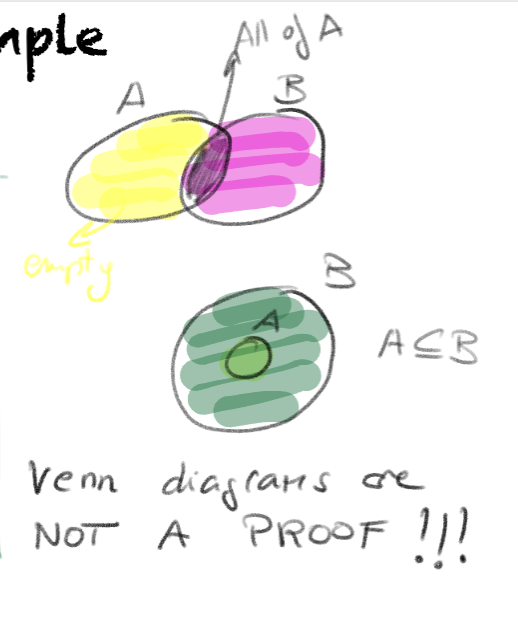 First implication
First implication
-
- Let
- then
- then
- Let
-
- Let
- then
- if since
- if
- Let
Second implication
- Let
- then
- then
- then
Associativity
- Intersection is associative:
- Union is associative:
Distributive laws
De Morgan laws
Key takeaways
- Do you understand how set membership works?
- Do you understand the definition of a subset, and how to prove that set A is a subset of B?
- Do you understand the meaning of intersection, union, complement, difference of sets?
- Do you know how to use Venn diagrams to help develop an intuition?
- Do you know how to prove that two sets are equal?
